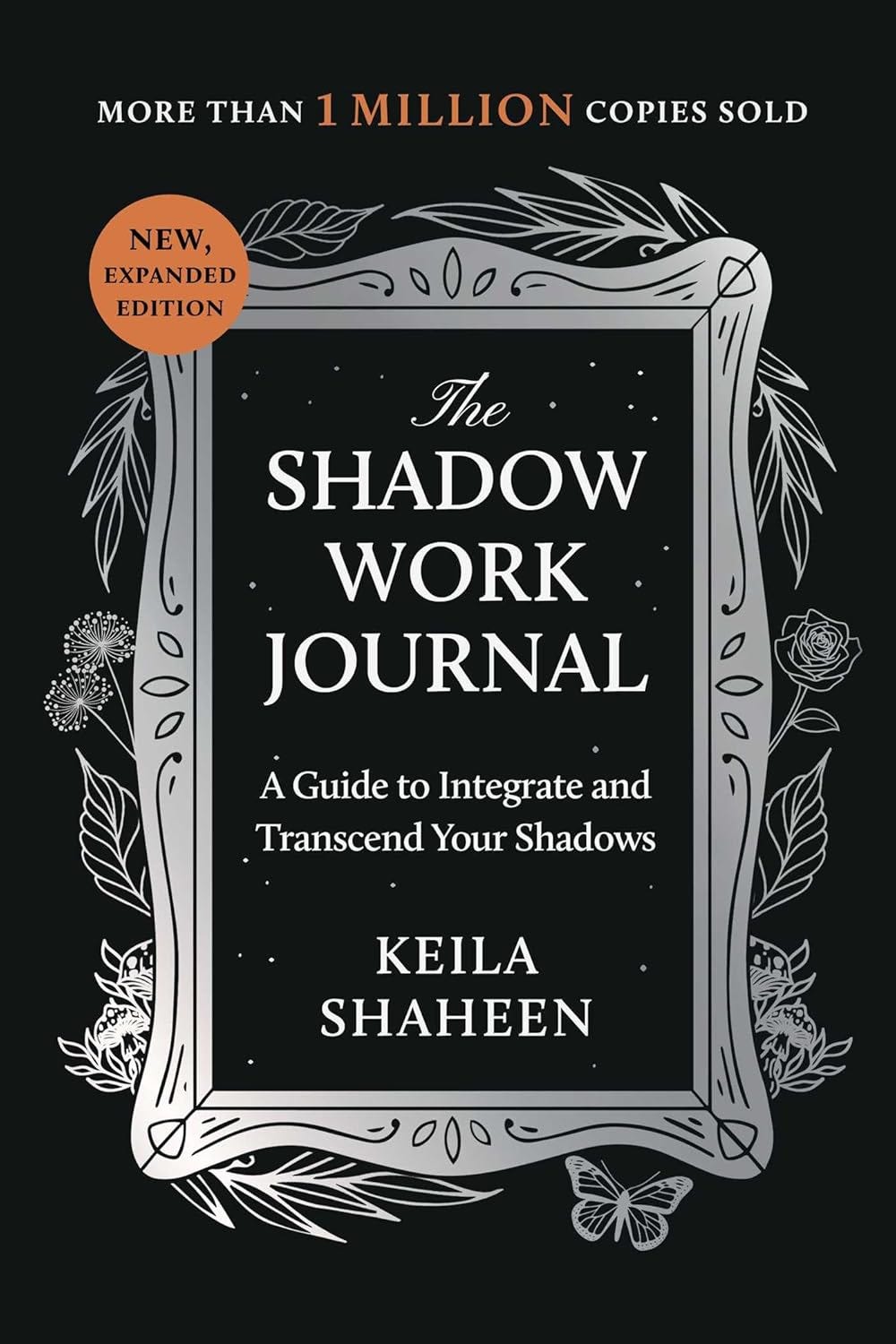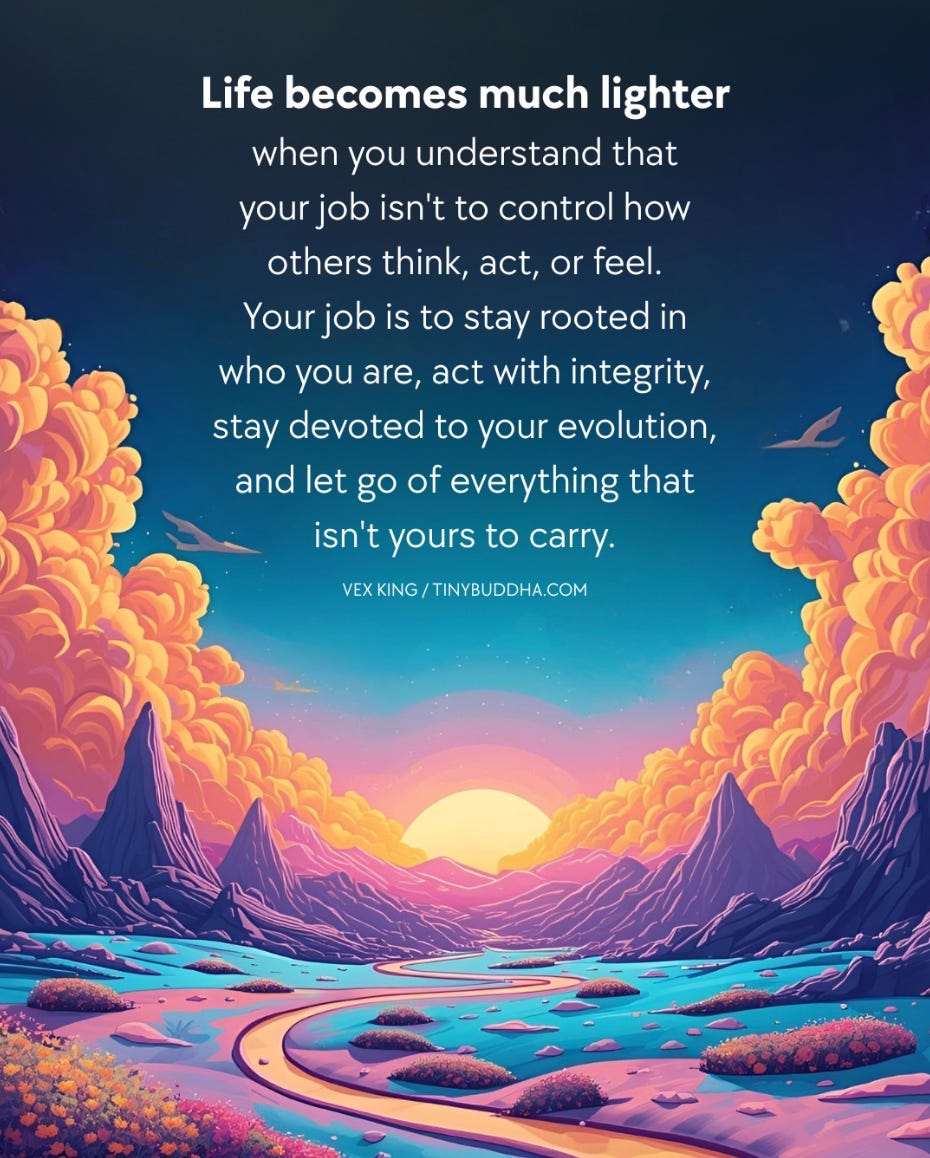Please note: this post is longer than my usual, but given the times we’re in, I believe the topic warrants it. Thank you for reading and/or listening. May you enjoy the read and perhaps even find it somewhat enlightening.
Hello beloved reader,
I’ve read plenty of books and articles about psychological shadows and shadow projection, but never before have I found the clarity that I did while listening to this podcast of Tammi Simon of Sounds True interviewing Dr.
I discovered Dr. Connie’s shared Substack through her partnership with a brilliant young woman,
who—through TikTok—sold more than a million copies of her originally self-published book, The Shadow Work Journal: A Guide to Integrate and Transcend Your Shadows.Their Substack partnership is a brilliant collaboration: Dr. Connie’s decades of depth and life’s work meet Keila Shaheen’s cultural reach—each amplifying the other.
I understand how these days younger people especially are hungry for any kind of tools that may help with the polarization we see everywhere.
If people learn how to integrate their own shadow, the need for “othering” melts away.
In the Sounds True interview, Dr. Connie cuts to the heart of shadow work: the “unacceptable” parts we repress don’t vanish—they run the show until we learn to see, name, and consciously relate to them.
She lays out a practical path—personify the pattern, track its cues in thought, feeling, and body; dialogue with its valid need—then she widens the lens to the collective shadow and invites activism rooted not in projection, but in grief, ethics, and compassion. (She’s one smart cookie!)
The takeaway is simple yet challenging: as Dr. Carl Jung said, “Hold the tension of the opposites”—reclaim what you’ve outsourced, and keep doing the work, because integration is a lifelong, liberating practice.
Jung’s call to hold the tension of the opposites is to honor anima and animus—the Western echo of yin and yang. The work is integration; patriarchy breaks that balance by suppressing the Divine Feminine and weaponizing a wounded masculine.
By “wounded masculine” I mean a distorted, defensive version of the energy of the masculine principle yang/animus—not the male human form—that is created when strength is cut off from feeling, care, and relationship.
It often grows out of injury, shame, or cultural training (patriarchy) and shows up as control instead of stewardship, performance instead of presence, and domination instead of protection. It’s close to what’s sometimes labeled “toxic masculinity,” but “wounded” names the harm and the possibility of healing—it centers the fact that it’s a condition, not a fixed identity.
How it tends to show up: in compulsive achievement and status-seeking; emotional shutdown or rage; fear of vulnerability and intimacy; contempt for the feminine in self and/or others—and again that’s the energy of the feminine/yin/anima, not the female human form; boundary-violating control; extractive, zero-sum thinking in systems and leadership.
What “healthy/integrated masculine” looks like instead: grounded presence; purpose in service (not ego); clean boundaries without control; courage paired with compassion; accountability and repair; deep respect for the feminine principle and collaboration with it.
How it heals: shadow work and honest inventory of harm; grief and somatic work to unfreeze feeling; learning relational skills (listening, consent, repair); mentorship/rites of passage; practices that balance doing with being. And yes—the feminine can be wounded too; the work is integration, not supremacy of one pole over the other.
“UNLESS YOU LEARN TO FACE YOUR OWN SHADOWS, YOU WILL CONTINUE TO SEE THEM IN OTHERS, BECAUSE THE WORLD OUTSIDE OF YOU IS ONLY A REFLECTION OF THE WORLD INSIDE YOU.” — CARL JUNG
Life consists of these conflicting, dualistic forces. Instead of simplifying reality into an "either/or" choice, Jungian psychology suggests that true insight comes from embracing the "both/and" nature of existence.
For Jung, refusing to resolve the tension of opposites is not a passive act of indecision, but an active, creative process with specific psychological benefits: personal growth; experience of the “transcendent function”—a spontaneous, new synthesis that contains elements of both sides; experiencing psychological wholeness; overcoming dualistic thinking—by learning how to hold a paradox we strengthen our capacity to tolerate uncertainty and become more flexible and tolerant in our views. It helps us to suffer less, and to lessen unconsciously inflicting suffering on others.
In the interview Dr. Connie says:
Every time Trump runs for office, he’s talking about those people.
Those people are invading,
those people are… stealing,
those people are replacing,
those people don’t deserve this and don't deserve that.His othering of groups, often minority groups, women and people of color, is shadow projection. And he's doing it from the most powerful podium in the world.
And what's happened is that has triggered a contagion of projection in the people who secretly thought that way, but didn't have the permission to speak it before, because it was not PC.
So now they can yell it at the top of their lungs. They can put it on their clothes and on their cars.
And he's given this permission to dehumanize individuals and groups of people with this black and white thinking.
And once you start dehumanizing groups, you get genocide.
You get Holocaust. You get slavery. You get camps.
… even if people don't have the language of shadow, they sense that’s what’s happening.
Carl Jung also said:
“In the shadow is the gold.”
Meaning that the suppressed or rejected parts of ourselves—the “shadow”—contain immense untapped potential. Once we get that, we’re motivated to excavate the gold from the shadow. The shadow is like the ‘muck’ from which the Lotus flower blossoms—and we blossom because of, not in spite of.
This idea was influenced by alchemy, where the process of turning base metals into gold was a metaphor for psychological transformation.
The parts of ourselves we avoid—our anger, envy, control, neediness, numbness, domination, compulsion to perform—often hide the very gifts we’re starving for.
What we exile does not disappear; it runs our life from the dark. If we turn toward it with curiosity instead of shame, we find usable treasure, like energy, clarity, creativity, wholeness.
Anger, for instance, isn’t just a mess to mop up; it’s a heat source for boundaries and self-respect. Envy is not proof you’re petty; it’s a compass pointing at a desire you’ve disowned. Chronic people-pleasing can conceal a powerful voice. Even numbness—flatness, checked-out days—may be guarding an animal of grief and love that needs gentleness to emerge. Perfectionism often armors a playful, risk-taking creator inside.
So the “shadow” isn’t evil. It’s unlived life.
~
Perfectionism sometimes looks like discipline, but most days it’s armor. It clamps down on the messy, risk-taking creator who wants to try ten things and break three. When we loosen the grip on “flawless,” play slips back in—and with it, the experiments that lead to fresh work.
A risk-taking creator is someone who’s willing to try things that might not work, because that’s how fresh, vital, alive, and vibrant new work appears.
Instead of waiting to feel certain, they go for it. They test a new form before they’ve “mastered” it, share drafts that are honest and unfinished, stake their name on an experiment that could be ignored—or criticized—and treat the outcome as information, not a verdict.
This looks ordinary and specific. A writer posts a messy weekly vignette to discover a book’s voice. A painter switches from oils to ink for a month and lets the wobble show. A podcaster pilots a five-episode mini-series on a strange topic. A baker serves buckwheat–rose shortbread at a farmer’s market just to see what happens.
The common thread is bias toward action and learning—a growth mindset: quantity and iteration over polish and paralysis.
Bottom line is that a risk-taking creator trades perfect for alive. They let curiosity lead, and they let results—good, bad, or weird—teach them what to try next.
This does not mean ‘don’t learn your craft.’ There’s a difference between excellence in craft, and allowing for play and creativity to flow.
This is part of what has been lost in Patriarchy, and what The Rising of the Divine Feminine is reclaiming.
~
At the end of this post I offer three questions for your reflection on what may be aspects of your own shadow to be integrated.
For my part, I’m investigating and exploring a—formerly unconscious—urge to dominate, which is perhaps part of my Inner Patriarch1. (There is a beautiful “Getting to the Root of Your Shadow” exercise at the end of Shaheen’s book.)
With this shadow integration work I’m learning that the urge to dominate is usually a distorted signal from something healthy—a drive for safety, clarity, speed, or standards. But fear or scarcity can garble that energy into control and domination.
I get to integrate this shadow by asking “What am I trying to secure?”
The gold underneath this aspect of shadow is agency, decisiveness, protector energy, vision, and the ability to uphold standards.
Domination is the power-over version of those gifts—the upgrade is power-with: I get to use strength to create clarity, safety, and momentum, not submission.
The process includes naming the part and updating its job from control/domination to stewardship. Essentially, the more evolved expression is a quality of leadership.
One recent moment brought this home. In a heated conversation, I felt the urge to push my perspective until others submitted. Catching myself, I paused and thought to myself: “What am I trying to secure?” The answer was simple: clarity. Once I named that, I could shift from control and dominating into presence, listening, and co-creating. That’s the integration work I’m interested in — and with my very human “muck” or shadow, I get plenty of opportunity to practice😎
Also in reading this lovely meme:
For me, the description of “your job” profoundly resonates. Perhaps this is an essential part of reclaiming the Divine Feminine: to remember the need to stay devoted to one’s evolution of consciousness and let go of everything that isn't one’s own to carry.
Phew. What a relief!🥰
And some questions for your reflection:
When you feel the urge to “other,” what body cue tips you off—and how can you pause and choose differently? (I once read that Ram Dass said that when you catch yourself about to be judgmental or project your disowned shadow, one thing you can say to yourself is, “And I am that too.”)
What would “holding the tension of opposites” look like in an authentic, even if challenging, conversation?
When you consider, “in the shadow is the gold,” what’s one piece of gold you’re ready to reclaim this week—and what practice will you use to excavate that gold?
And I’ll end with two more quotes from Carl Jung:
“I am not what happened to me. I am what I choose to become.”
and
“THE PRIVILEGE OF A LIFETIME IS TO BECOME WHO YOU TRULY ARE.”
Long time readers will know of the Inner Patriarch, but if you’re new here, Dr. Sidra Stone’s The Shadow King: The Invisible Force That Holds Women Back (1989), a cornerstone in feminist psychology, introduces the concept of the “Inner Patriarch;” an unconscious internalization of patriarchal authority that undermines women’s autonomy and perpetuates self-limiting beliefs. By naming this force the “Shadow King,” Stone exposes how cultural systems of domination are carried within women’s psyches, shaping relationships, work, and identity. Her work provides a psychological framework for understanding and dismantling the internalized structures that keep women bound to patriarchal norms.





I really appreciate this post; it not only gave me plenty to reflect on but also some clear direction for how to approach shadow work. I’ve done some on my own with little guidance and know I have more to do, so seeing these insights on how actually to navigate it feels encouraging. I especially resonated with the idea that in the shadow is the gold. that what we often reject may hold the very gifts we’re looking for. Lovely post, thank you for sharing.
This is fascinating! Thank you for sharing. I want to listen to that podcast you mentioned now.